
What Happens When You Burn Lavender
Burning herbs or ‘smudging’ as it is commonly known, is an ancient practice used to fill indoor and outdoor spaces with the smoke produced from burning herbal material.This ritual is used to cleanse the air, influence mood and enhance spiritual practices.
‘Smudge’ is an old word used to describe a fire producing dense smoke, often used to protect from insects and the practice of smudging is an essential part of many pagan traditions used to purify ceremonial spaces.
Many herbs can be burnt in this way, producing aromatic smoke that offers physical and emotional effects. The most commonly used is sage, other popular herbs burnt include Mugwort, Rosemary, Juniper, and Lavender.
Lavender (Lavandula officinalis) is a common herbaceous shrub belonging to the Lamiaceae family. Its origins are in the Mediterranean regions but it is now a popular plant found growing throughout the world.
Lavender has many uses including flavoring, fragrance, cosmetic, and medicinal applications. It is one of the most well-known aromatherapy oils and widely used herbs. Medicinal properties associated with lavender are numerous, including antidepressant, relaxant, antifungal, and analgesic actions.
Can you burn Lavender?
Absolutely! Many people will use the essential oil of lavender in an oil burner to gain the benefits and fragrance of the home but there are several other ways to burn lavender including lavender candles, incense, and smudge sticks.
Smudge sticks are dried herbs wrapped in a bundle, most people are most familiar with sage smudge sticks but they can be a combination of several different herbs. Some people enjoy smoking herbs such as lavender, believing that they can gain positive mood effects this way, and the practice is rooted in European tradition.
What are the benefits of burning Lavender?
Mood Setting
The scent of lavender is considered to have a relaxant effect and studies on the essential oil have noted a reduction in stress responses and improved sleep. Lavender is an uplifting herb with calming qualities that can be enjoyed. The scent is sweet and floral with woody herbaceous notes.
Depending on the variety burnt the smell can vary, some forms of lavender have a stronger camphorous scent.
Lavender is most efficient when paired with Nature’s Valium. This natural potent remedy boosts the production of GABA, a calming brain chemical that promotes sleep. It helped me A LOT, especially with my sleep issues connected with menopause. You can read more about it here.
Insect Repellant
Burning many herbs, including lavender, can help keep insects away such as moths, fleas, flies, and mosquitoes – unlike humans, these insects distinctly dislike the fragrance which is due to compounds in the essential oils such as linalool and linalyl acetate
Cleansing
The burning of herbs like lavender is often associated with witchcraft practices and is considered to be cleansing and purifying. As lavender has antimicrobial properties it could be burnt to remove pathogens from the environment.
Spirituality and Ceremony
Similar to the above, burning lavender and other herbs can be used as a routine to cleanse and purify space, dispelling negative energies.
According to the ‘Language of Flowers’, lavender represents purity, tranquillity, clarity and protection.
Smudging is an ancient Native American practice. It is a special and beneficial spiritual experience still practiced by tribes today.
They would burn sweetgrass, tobacco, or white sage and oftentimes, this would be done over a bowl, shell, or something for the ashes to collect. The smoke was waved around with a sacred feather.
Many people may choose to burn lavender in meditation spaces to support their practice.
How to source your Lavender
Unfortunately, many try to sell their “lavender candles” and room fragrances without saying they’re lab-made and can do more harm than good. I’ve grown my own lavender in a pot, which made my home smell incredibly good even before I burned the dried leaves. The kit I found also includes medicinal plants that can be turned into remedies. Check out the lavender seeds here!
If you have lavender growing in your garden it is straightforward to harvest the flower stems for burning. Wait until they are almost fully flowering and select several stems to collect.
Choose stems with closed buds as once the flowers of your lavender are fully opened they will have lost some of the volatile oils and the scent will be reduced. Tie the stems together in a bunch and hang them upside-down in a cool, dry place out of direct sunlight for at least a week.
If you opt to dry lavender in sunlight it will be quicker but be aware some of the colour will be bleached out and some medicinal compounds may degrade.
Oven drying – for quick results you can dry your lavender stems in an oven spread them out on a baking sheet and leave for about 10 minutes on low heat. Check after 10 minutes and repeat until dried
Alternatively, you can purchase lavender in dried bunches or buy loose, dried flower heads
Step-by-step guide to burning Lavender
Select a fire-proof container in which to place your lavender or use a fire pit or a fireplace. You can also add your dried lavender to a wood fire.
Steps
- Select your lavender bunch of dried stems or dried flowers.

- Choose a well-ventilated area in which to burn your lavender with adequate space so that nothing flammable can come into contact with your burning lavender.
- Place the lavender in a non-flammable container or fire pit.
- Ignite your bundled lavender with a lighter or matches, allow the flame to catch, and then blow out leaving smoldering stems.

- Enjoy the aromatic smoke
Do not leave your lavender unattended and make sure any fire is out before leaving it unattended.
Is Lavender toxic to inhale?
Fumes from lavender, whether essential oil or smoke, are safe to inhale for most people. All smoke can be irritating to respiratory passages but lavender is not a toxic plant.
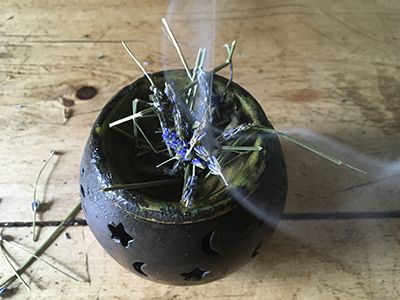 Always use common sense when burning any substances, do not leave fires unattended, and use the right container. Be especially careful around young children or those with breathing disorders or known lavender allergies.
Always use common sense when burning any substances, do not leave fires unattended, and use the right container. Be especially careful around young children or those with breathing disorders or known lavender allergies.
Safely burning lavender in inside or outside spaces can be really enjoyable, if you grow your own experiment with the different varieties and fragrances. Enjoy your practice and the very special atmosphere you can create with wonderful herbs!








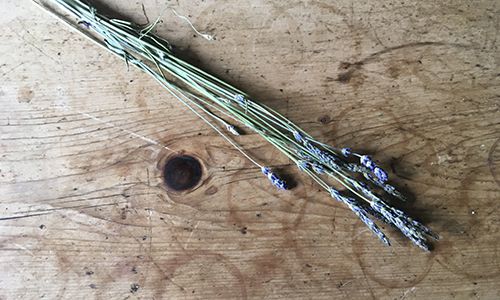
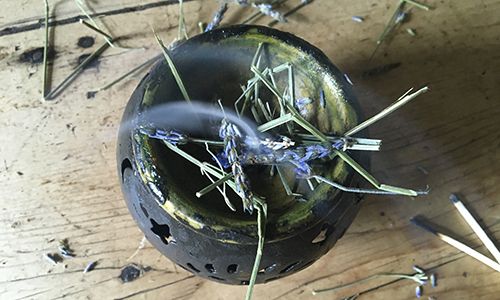
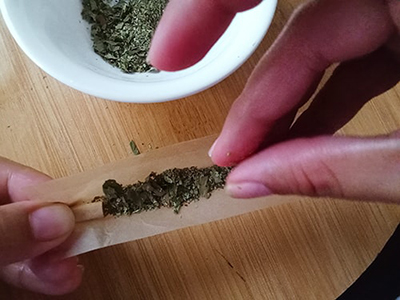
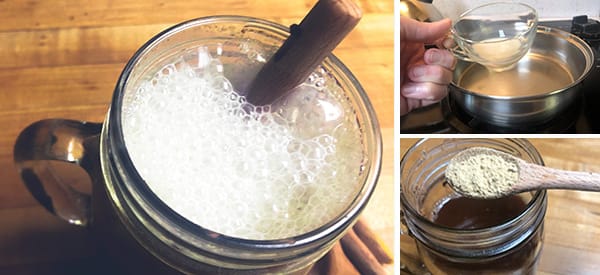
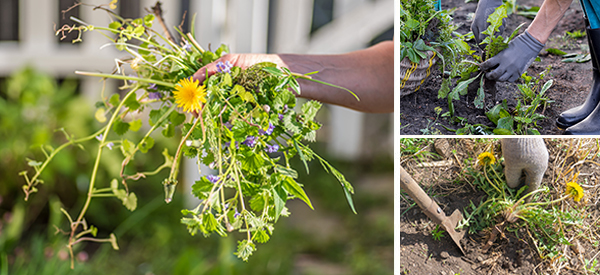
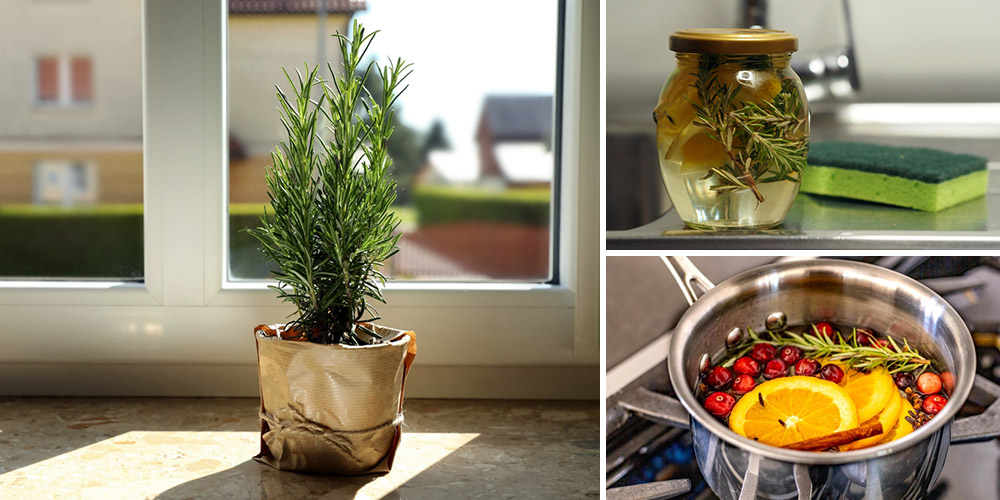
🧬🕯️🙈🙊🙉Citrizine -florine wonderful 👍 terpine profile of this beautiful 😍 flower 💐🌹 touch of pineine depending on your geography.this flower is another of the lord s medicine field.
I have Asthma, and burning lavender or any other substance cannot be beneficial for my health. Burning anything closes down my airway and I start wheezing! I don’t see how breathy smoke or smoking can be healthy for anyone.